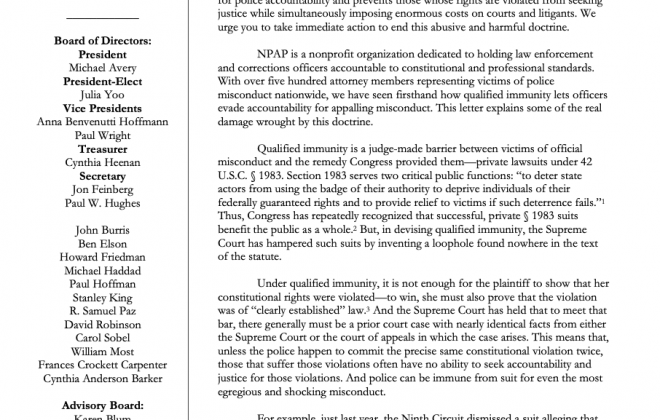$6 Million Jury Verdict in San Diego Police Misconduct Suit
Claire Hough was found murdered on August 24th, 1984 on Torrey Pines State Beach near San Diego, California. Dual forensic analyses (as is the standard practice in such cases) by the San Diego Police Department (SDPD) Crime Lab and the San Diego Coroner’s office in the immediate aftermath of the murder found no sperm cells present on any of the swabs taken from Claire’s body, and, in the absence of other viable leads, the case remained open and unsolved for decades. Then, in 2012, DNA analysis of vaginal swabs taken from Claire Hough revealed a match with Kevin Brown, a crime lab technician with the SDPD at the time of Claire’s murder. DNA analysis of blood stains on Claire Hough’s clothing revealed a match with Ronald Tatro, a convicted rapist with a history of attacking women.
While no lab setting is immune to the risk of contamination, this was especially true of crime labs in the 80s. The preliminary test performed to check for the presence of semen is known as an Acid Phosphatase (AP) test. Because of the high concentration of acid phosphatase found in semen, an AP test utilizes a reagent that reacts by changing color in the presence of the phosphatase. In order to ensure the efficacy of the reagent, all reagents are first tested using a known semen sample (the positive control). In 1984, it was common practice for male lab technicians to keep a sample of their own semen at the lab in order to provide the positive control sample. Such practices clearly introduce avenues for sample contamination, but in 1984, prior to the advent of DNA analysis as a forensic tool, analysts had no awareness of the risk of contamination.
Despite knowledge of this lab practice and the possibility of contamination of samples, Detective Michael Lambert, the cold case officer assigned to Claire Hough’s case in 2012, pursued a year-long investigation seeking evidence that could link Brown and Tatro. Tatro was dead by this time. Kevin Brown was retired from the SDPD and living with his wife of 20 years, Rebecca, in San Diego. When a year had gone by and, despite the absence of any evidence of wrongdoing by Kevin Brown, Detective Lambert requested a search warrant for the Browns’ home, he claimed that he had confirmed with the SDPD Lab manager that contamination was “not possible” in this instance. At trial, both the SDPD Lab manager and the head of the DNA unit at the Lab testified that they had never expressed to Lambert or any other homicide detective that contamination was not possible in this case. Quite the opposite – the head of the DNA unit testified he told homicide detectives that contamination had to be considered a possibility due to lab practices in 1984 before the advent of DNA analysis. This was omitted from Lambert’s search warrant affidavit. The DNA analyst who found Kevin Brown’s DNA profile in 2012 testified that within 2-3 months of discovering Kevin Brown’s DNA, he told Lambert of the practice of male analysts using their own semen samples to conduct forensic testing at the Lab. This was omitted from Lambert’s affidavit as well.
Once the judge issued the search warrant in January 2014, Lambert proceeded to seize tens of thousands of photos, documents and other personal mementos from the Browns’ home beyond the scope of the warrant. Lambert reviewed the seized property and determined that there was no evidence relevant to his investigation and no evidence of any wrongdoing by Kevin Brown. When two months had gone by and the items had still not been returned, Rebecca Brown began calling Lambert. Rebecca’s mother (age 80 at the time) lived with her and Kevin, and some of the items seized had belonged to her elderly mother. She explained to Lambert that Kevin had a long history of anxiety and depression, and noted that the property seized by Lambert had nothing to do with the crimes he was investigating. Lambert promised to return their property in June. Rebecca called again in early July as they had not received their property. Again, Lambert promised to return their property within 30 days.
By August 2014, eight months after the initial seizure, Lambert informed the Browns that he could not guarantee a date of return. Rebecca explained that her husband’s anxiety was worsening–he’d been hospitalized for panic attacks and was growing increasingly despondent as the case dragged on with no clarity or end date in sight. Lambert knew that Kevin suffered from anxiety and depression and had been bullied throughout childhood and adolescence. At trial, the parties’ psych experts agreed on one fact: Kevin Brown suffered from a history of chronic psychiatric conditions, including anxiety, depression, and lifelong bullying.
Kevin and Rebecca believed that once police officials reviewed the seized property and found no evidence of wrongdoing, police officials would conclude the DNA result had been caused by contamination. They believed the return of their property would signify Kevin’s exoneration. When this didn’t happen Kevin’s mental health continued to decline. In September 2014, Lambert spoke with Rebecca’s family members, telling Kevin’s brother-in-law that contamination was not possible in this case (and encouraging him to confront Kevin with the knowledge) and telling Kevin’s sister-in-law that a judge had issued the search warrant of the home because there was a good basis to believe evidence relevant to the crime would be found. Kevin’s condition continued to deteriorate and on October 20th, 2014, nearly a year after the initial search of the house, he committed suicide. Still lacking any evidence beyond the DNA match, the SDPD portrayed his suicide as confirmation of his guilt and issued a press release indicating they had been preparing to arrest Kevin Brown when he committed suicide.
In July of 2015, Rebecca Brown filed a lawsuit against the SDPD on behalf of her late husband alleging, among other claims, that the search warrant obtained had been in violation of Franks v. Delaware (that, in other words, its omissions regarding the likelihood of contamination could be considered judicial deception). Nearly five years later, on February 3, 2020, Rebecca’s case was finally heard in court. The jury ruled in Rebecca’s favor, rewarding her compensatory damages that totaled $6 million and punitive damages against Lambert in the amount of $40,000. Grace and her team relied on the testimony of two of the crime lab directors, who denied Detective Lambert’s claim that contamination was not possible, and a group of current and retired crime lab employees who testified regarding the possibility of contamination and the warnings they gave Lambert. This testimony further reinforced the plaintiff’s argument of judicial deception, as Lambert had claimed in his warrant request that he had confirmed the impossibility of contamination as a cause.
As always such a victory is only bittersweet. No amount of money can bring Kevin back, or undo the years of stress and pain that the Browns were made to experience. It is crucial, though, that individuals like Rebecca Brown stand their ground in the face of the kind of mistreatment that she and her husband experienced at the hands of the San Diego police.
We are immensely grateful for Rebecca’s persistence and courage in fighting this case, and for the work of her attorneys, Eugene Iredale, Julia Yoo, and Grace Jun of Iredale and Yoo, APC, who we are so honored to count as NPAP members. To hear from Grace at the conclusion of this case that she “could not do this without NPAP, without the collective wisdom, without the collective insight, but also just the spirit, the camaraderie, the emotional fortitude, the safe space to vent, to rail against the injustices…” is the deepest compliment we could receive. As she noted in a conversation following the victory: “A victory is always a community victory. It is never, never done alone.”






